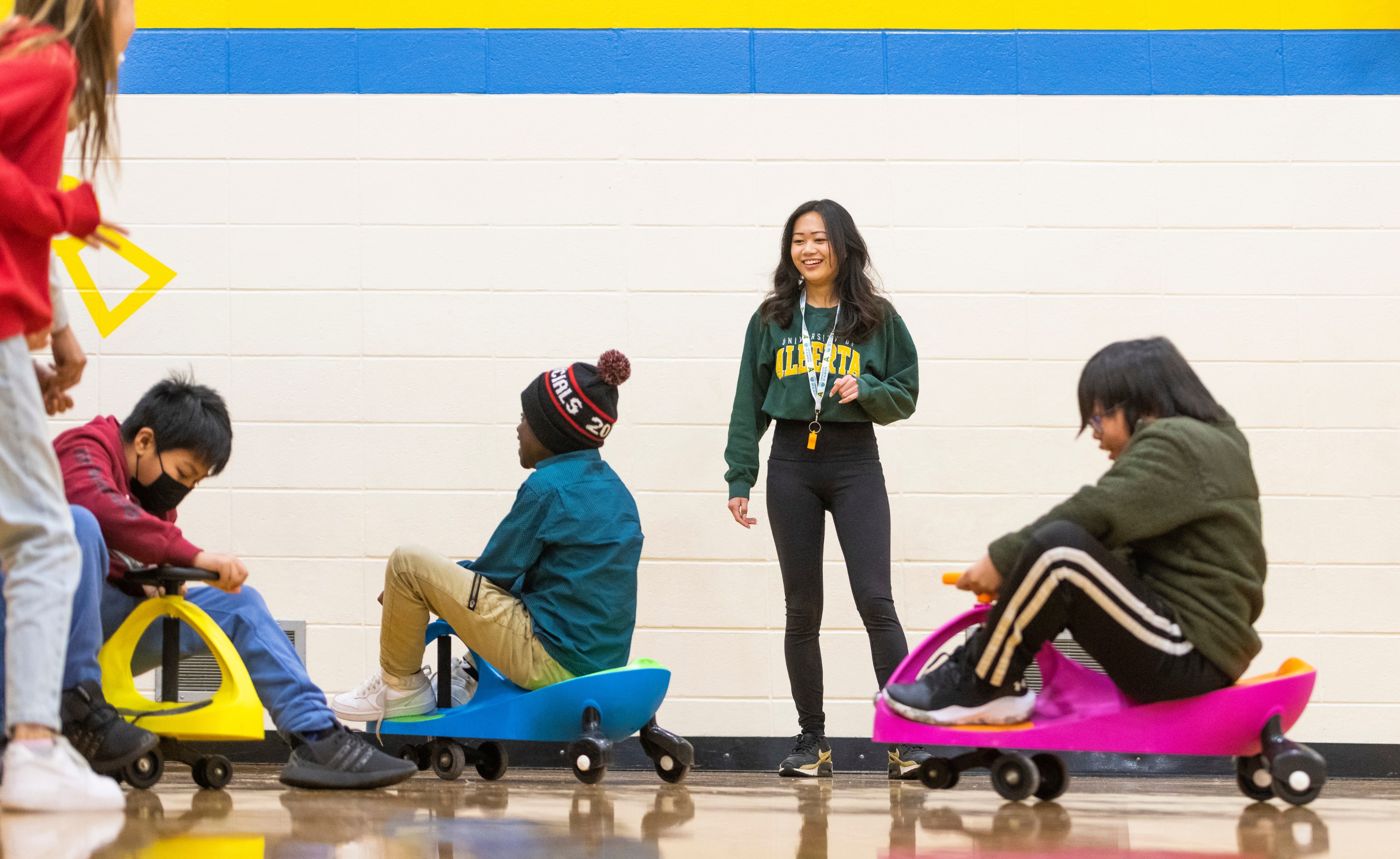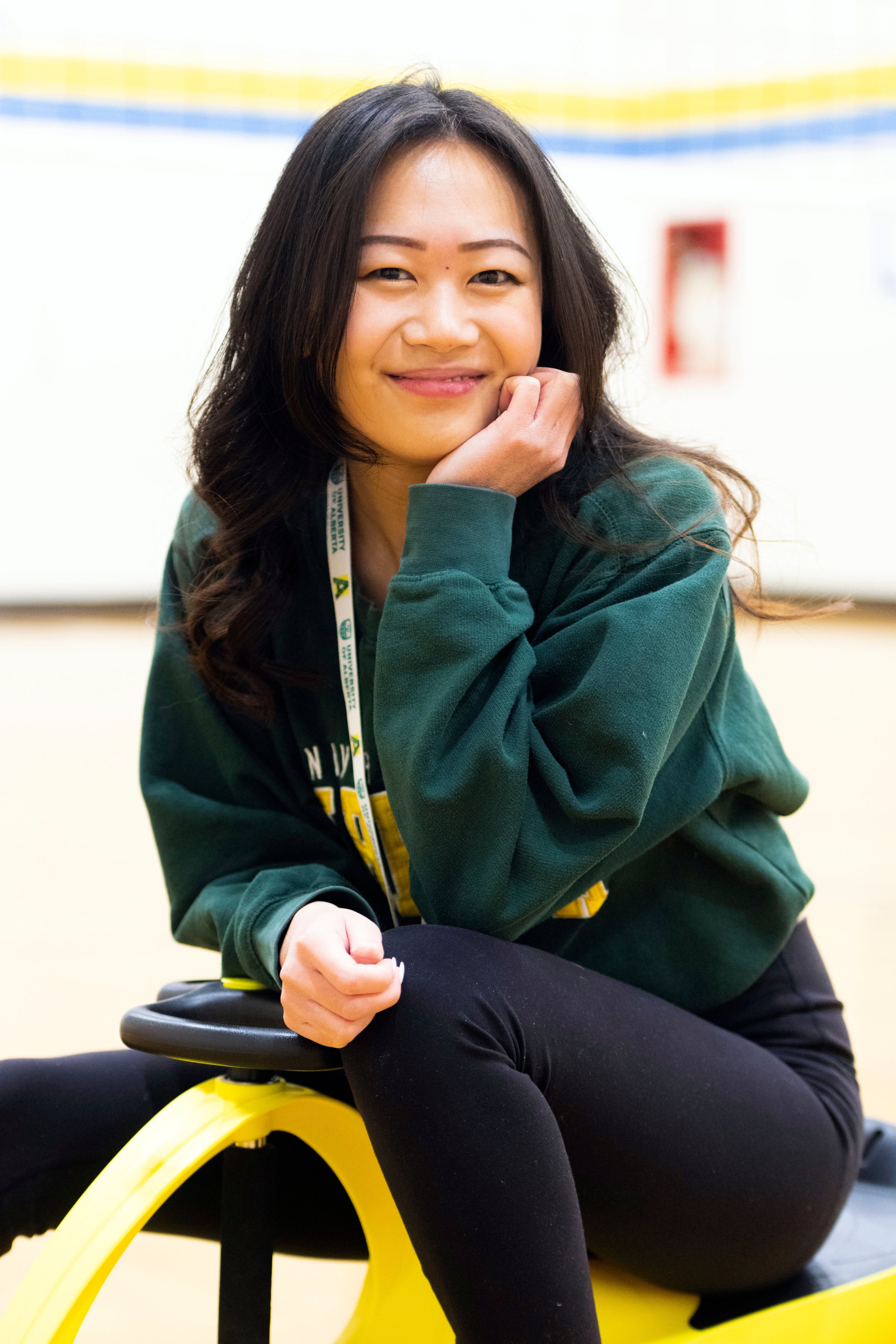When Iris Ho chose to pursue a degree in Kinesiology, Sport, and Recreation, she had her sights set on either going into medicine or becoming a physiotherapist. She knew she wanted to help people, but her understanding of exactly what that means changed throughout her studies.
After Ho chose to major in adapted physical activity, the various placements and volunteer opportunities she had sparked a major shift in her perspective.
“What I really loved was the relationships you got to build and just better understanding my role among others, better understanding ableism,” she says. “I learned a lot about all these assumptions and things I didn’t know I had when interacting with people, and it made me a more conscientious person.”
As she explains, those within the adapted physical activity major “emphasizes a collaborative approach to exercise, as well as health in general.”
“We’re really focused on connecting with our clients, understanding their story and trying to meet them where they’re at.”
She got a first-hand look at what working with clients might be like at The Steadward Centre for Personal and Physical Achievement. The U of A facility focuses on programs and opportunities delivering adapted physical activity and parasport, and it gave Ho the chance to bring what she was learning in the classroom into the real world.
“Instead of establishing myself as the expert and ‘helping’ people by telling them what to do, it’s working with your client to figure out what their needs are and making plans or programs to fit their terms.”
The experience was so rewarding that she returned the following semester, interested in working with another population the facility serves. She volunteered with one of the para-athletes programs, moving from a one-on-one approach to helping develop a group of competitive athletes.
She likely would have spent even more time volunteering with the Steadward Centre in the semesters to come, but the chance to pursue an opportunity that had been intriguing her for years proved irresistible.
Ho had seen a presentation about Play Around the World during her first year of undergrad, but the program — which requires students to spend several months in a faraway country — always seemed a little daunting. Finally, in the summer before her fourth year, she realized it was now or never.
She applied, figuring she could push her graduation date back from spring to fall this year if she ended up being one of the successful candidates — which she was.
“I thought it would be an experience that would really add to my undergraduate degree and would be a great way to end off this program,” she says. “I could bring in all the skills that I’d learned throughout my degree and apply it into a different knowledge landscape, to push myself out of my comfort zone and experience the opportunities to connect that are out there.”

